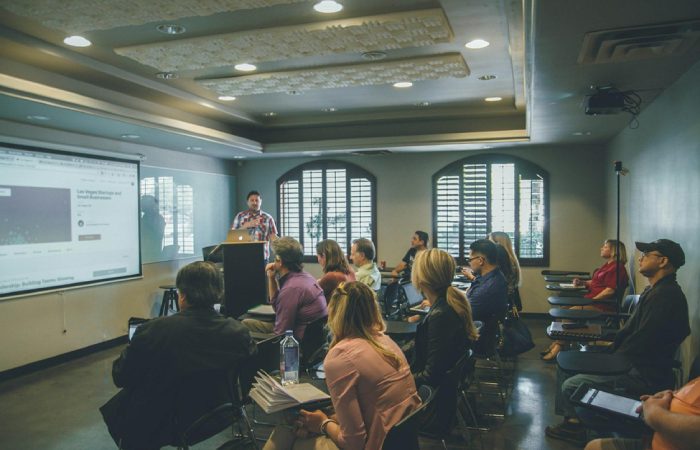Learning experience platforms have become one of the best methods to deliver knowledge. With time, these tools have become a must-have for small and large companies. However, many are still figuring out why it’s so important to invest in development.
So let’s take a look at all the reasons below.
1. The Corporate Learning Landscape Is Shifting—Fast
Global L&D teams are under pressure to close skills gaps, support hybrid work, and prove business impact—all while learner expectations rise. Traditional learning management systems (LMSs) still handle compliance and record-keeping, but they were built for top-down “course delivery,” not for the continuous, self-directed upskilling that today’s workforce demands. That gap is fuelling explosive interest in learning experience platforms (LXPs), a market analysts expect to grow at double-digit rates through 2028. LXPs combine consumer-grade UX, AI-driven recommendations, and social features to meet learners where they are and move the needle on performance.
2. LMS vs. LXP—A Quick Refresher
An LMS is administrator-centric: it stores SCORM packages, enrolls users, and spits out completion reports. By contrast, an LXP is learner-centric. It curates content from multiple sources, lets employees create or rate materials, and uses algorithms to surface the right nugget of learning in the flow of work. One recent comparison notes that LXPs identify user abilities and recommend paths, while LMSs “focus on data and compliance. Another industry analysis found that 72 % of LXP deployments are used for on-demand learning versus only 41 % of LMS deployments—clear evidence that LXPs better match the just-in-time paradigm modern organisations want.
3. Personalisation at Scale Through AI
What really propels LXPs into the future is artificial intelligence. Platforms such as Avature’s LXP apply machine learning to rich skills data, profile preferences, and real-time activity to generate hyper-personal recommendations and dynamic learning paths. HR can even tweak “white-box” AI parameters to emphasise the competencies that matter most to the business, then watch the system refine its own skills ontology over time. In effect, the LXP becomes a personalised career GPS, guiding thousands of employees simultaneously—something no L&D team could do manually.
4. Micro-Learning and the “TikTok Effect”
Attention spans are short and frontline staff are often mobile. LXPs excel at pushing bite-sized video, podcast, or interactive snippets directly into collaboration tools or mobile apps. Construction giant Laing O’Rourke, for instance, rebuilt its training around TikTok-style micro-modules, quadrupling reach while trimming budget waste. Stats back up the trend: the Training Industry study cited above shows on-demand learning is now squarely in LXP territory, confirming that flexible micro-content is what learners actually consume.
5. Social and User-Generated Learning
The best LXP options are built for collaboration: SMEs can shoot a two-minute how-to video, peers can comment, and AI can tag it for others who need the same skill later. Features like discussion threads, reactions, and easy mobile authoring turn tacit tribal knowledge into reusable assets—something an LMS’s top-down publishing model rarely achieves. The result is a living knowledge-sharing ecosystem that keeps pace with the business.
6. Skills-Based Talent Strategy and Internal Mobility
Because LXPs ingest skills data from HRIS, performance reviews, and even job boards, they double as talent-marketplace engines. Employees exploring an internal role can see skill gaps instantly—and the LXP can serve up just the courses or mentoring they need to qualify. That tight link between learning and mobility is a cornerstone of future-ready workforce planning.

7. Analytics That Speak the Language of the C-Suite
Advanced LXPs provide real-time dashboards that map consumption data to business KPIs—sales quotas hit, tickets closed faster, or retention boosted—helping CLOs move past “hours of learning delivered” to metrics executives care about. Avature stresses configurable data models so every organisation can track what matters.
8. Putting It All Together
Corporate learning is no longer about pushing courses; it’s about enabling people to pull the knowledge they need, when they need it, in a format they’ll actually use. LXPs deliver:
- AI-driven personalisation keeps learning relevant.
- Micro-learning fits busy schedules and mobile workflows.
- Social, user-generated content captures in-house expertise.
- Skills and talent data connect development to mobility.
- Actionable analytics prove ROI and guide strategy.
Learning management systems still have an important place for compliance and structured programmes, but the future of corporate learning – especially any programming trying to achieve agility, engagement, or workforce upskilling at scale – belongs to learning experience platforms. Learning and development leaders with a sustainable vision who take a step toward LXP today are not merely purchasing software; they are creating the adaptive, learner-centred ecosystem that their organisations will need to stay competitive through the end of the decade.

